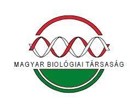Állóképek egy fejlődő tudományterületről: a Magyar Természetvédelmi Biológiai Konferenciák tanulságai
Absztrakt
A III. Magyar Természetvédelmi Biológiai Konferencia (MTBK) és az 1. Európai Természetvédelmi Biológiai Konferencia (ECCB) részvételi adatainak felhasználásával igyekszünk képet adni a hazai természetvédelmi kutatások jelenlegi állapotáról, a hazai és nemzetközi trendekről. Az MTBK-n a kutatói és gyakorlati oldal részvételi aránya kiegyensúlyozott volt, emellett kiemelkedő volt a hallgatói részvétel. Ez mind fontos feltétele a párbeszédnek és a tapasztalatátadásnak. Az MTBK élőhely védelmi tematikájából fakadóan a konferencián növényekkel foglalkozó kutatási témák túlsúlya volt megfigyelhető. A gerinces és ízeltlábú taxonok jó reprezentáltsága mellett kevés egyéb gerinctelen taxonnal és gombákkal foglalkozó vizsgálat került bemutatásra. Az ECCB-n bemutatott összes és magyar prezentációk összehasonlításából jelentős eltérésekre derült fény. A hazai kutatás erőssége az urbán ökológia, közösségökológia, gyepökológia és hidroökológia, azonban kevés a hazai vizsgálat veszélyeztetett fajok kezelése, konzervációgenetika és védett területek tervezése és kezelése terén. Emellett nagyon elhanyagolt a természetvédelem társadalmi-gazdasági beágyazását vizsgáló irányzat. A jelentős hazai elméleti és gyakorlati előrelépések mellett a magyar természetvédelmi biológiai kutatások legnagyobb adóssága a problémákat megelőző stratégiai megközelítés hiánya. Egyre nagyobb mértékű környezeti változások közepette hazánk biológiai sokféleségének hosszú távú megőrzéséhez az egyéni természetféltő elhivatottság mellett komoly összefogásra van szükség. Ezért szorgalmazzuk a hazai természetvédelmi biológiai kutatásokhoz szükséges megfelelő financiális és intézményi háttér megteremtését.
Hivatkozások
Báldi, A. (1998): A konzervációbiológia meghatározása publikált cikkek elemzése alapján és javaslatok hazai kutatásokra. — Természetvédelmi Közlemények 7: 5-17.
Báldi, A. (szerk.) (2006): Természetvédelmi biológia: a biodiverzitás megőrzésének tudománya. - Magyar Tudomány 2006/6: 650-714.
Barta, Z. & Feró, O. (2006): Optimális éves viselkedési modellek — a konzervációbiológia új eszközei? Magyar Tudomány 2006/6: 680-687. (letölthető: www.matud.iif.hu)
Jordán, F. & Liu, W. (2005): Topológiai kulcsfajok azonosítása táplálékhálózatokban — egy szociometriái módszer. — Magyar Tudomány 2005/4: 404-409. (letölthető: www.matud.iif.hu)
Jordán, F., Báldi, A., Őrei, K.M., Rácz, I. & Varga, Z. (2004): Kritikus élőhelyfoltok azonosítási lehetőségei - egy esettanulmány. — Természetvédelmi Közlemények 11: 31-38.
Lawton, J. H. (2007): Ecology, politics and policy. - Journal o f Applied Ecology 44: 465- 474.
Lendvai, Á. Z. & Szentirmai, I. (2004): Az egész részei, avagy tudományterületek kapcsolódása a természetvédelmi biológiában az I. Magyar Természetvédelmi Biológiai Konferencia tanulságai alapján. - Természetvédelmi Közlemények 11: 11-20.
Lengyel, Sz., Lendvai, Á. Z. & Szentirmai, I. (2007): IV. Magyar Természetvédelmi Biológiai Konferencia műhely találkozó, Tokaj, 2007. március 29-31. Program, előadások és poszterek összefoglalói
Lengyel, Sz., Sólymos, P. & Klein, Á. (szerk.) (2005): A III. Magyar Természetvédelmi Biológiai Konferencia Program és Absztrakt kötete, Eger
Marjainé Szerényi Zs. (szerk.) (2005): A természetvédelemben alkalmazható közgazdasági értékelési módszerek. KvVM TvH, Budapest (letölthető a teljes könyv a http://www.termeszetvedelem.hu honlap publikációk menüpontjáról)
Margóczi, K., Báldi, A., Dévai, Gy. & Horváth, F. (1997): A természetvédelmi ökológia kutatási prioritásai. — Természetvédelmi Közlemények 5-6: 5-16.
Mihók, B. & Standovár, T. (2001): Együttműködés a természetvédelemben - egy országos felmérés eredményei. - Természetvédelmi Közlemények 9: 15-30
Moore, D., Nauta, M. M., Evans, S. E. & Rotheroe, M. (szerk.) (2001): Fungal conservation: issues and solutions. Cambridge University Press, Cambridge.
New, T.R. (1995): An introduction to invertebrate conservation biology. Oxford University Press Inc., New York.
Ponder, W. & Lunney, D. (szerk.) (1999): The other 99%. The conservation and biodiversity of invertebrates. Transaction of the Royal Society of New South Wales, Monsam, Australia.
Pullin, A. S. & Knight, T. M. (2001): Effectiveness in conservation practice: pointers from medicine and public health. - Conservation Biology 15: 50-54.
Simard, S. W., Perry, D. A., Jones, M. D., Myrold, D. D., Durall, D. M. & Molina, R. (1997): Net transfer of carbon between ectomycorrhizal tree species in the field. - Nature 388: 579-582.
Sólymos, P. & Fehér, Z. (2005): Conservation prioritization based on distribution of land snails in Hungary. - Conservation Biology 19: 1084-1094.
Standovár, T. (2001): A természetvédelmi biológia helyzete Magyarországon egy országos felmérés alapján. — Természetvédelmi Közlemények 9: 1-14.
Standovár, T. & Primack, R. B. (2001): A természetvédelmi biológia alapjai. Nemzeti Tankönyvkiadó, Budapest.
Sultan, S. (2007): Development in context: the timely emergence of eco-devo. - Trends in Ecology & Evolution 22: 575-582.
Tallis, H. M. & Káréivá, P. (2006): Shaping global environmental decisions using socioecological models. — Trends in Ecology & Evolution 21: 562-568
Vörös J., Alcobendas, M., Martínez-Solano, I. & García-París, M. (2006): Evolution of Bombina bombina and Bombina variegata (Anura: Discoglossidae) in the Carpathian Basin: a history of repeated mt-DNA introgression across species. - Molecular Phylogenetics and Evolution 38: 705-715.






